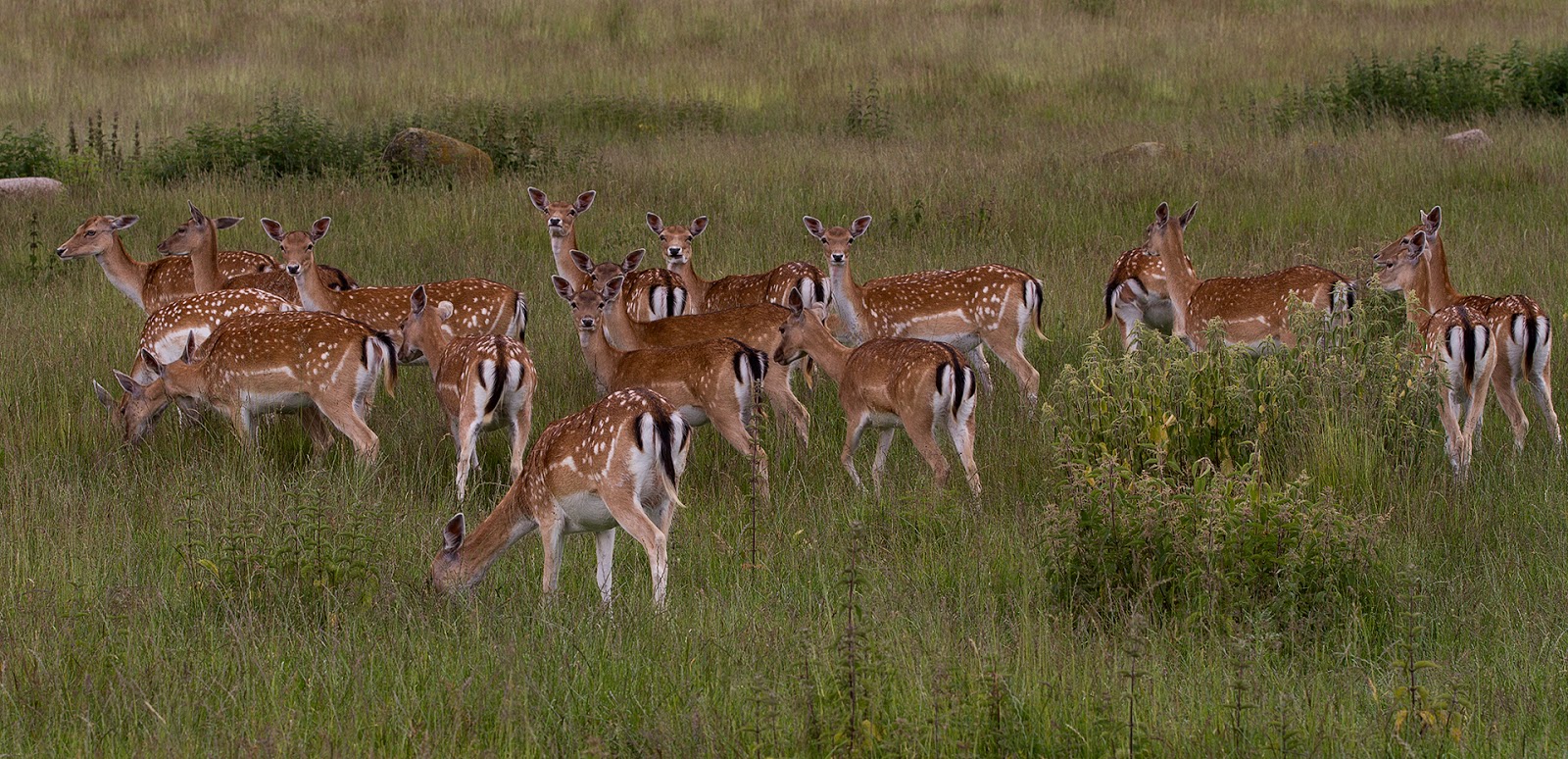The Fallow Deer (Dama Dama) is more of a herd animal than other deer. In the spring and summer, they prefer open landscape with good access to grass. During the autumn and winter, they often pull into the woods. They also use a greater degree of eyesight to orientate themselves, and are less dependent on sense of smell and hearing. This probably has to do with the fact that they often travel in open terrain, where vision is the most important sense. The Fallow Deer can recognize motionless human beings. It is not fond of swimming.
The Fallow Deer eats mainly grass and leaves from deciduous trees in summer, and nuts, berries and bark in winter. They graze mostly in forest clearings with lush vegetation. They have fairly regular meals, usually early in the morning and in the evening and they graze mostly in flocks. After eating, it is common that the herd pulls back into the denser vegetation. The night is spent cud-chewing and rest. It is quite rare to see a Fallow Deer drink water, as they usually get their needs covered through the food they eat, like dewy grass.
The Fallow Deer does not naturally exist in Norway where I am from, so these pictures are taken during my summer vacation in Denmark.
























































